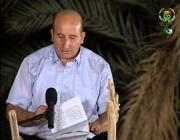.
. 1st ed. Tlemcen, Algérie: Maison des universitaires pour l’édition, l’imprimerie et la diffusion; 2024 pp. 105.
Cet ouvrage pédagogique est spécifiquement conçu pour les étudiants de deuxième année du parcours Ingénieur en Génie des Procédés. Conforme au canevas du parcours Ingénieur d’État, particulièrement destiné aux bacheliers TM, il propose une approche exhaustive et structurée des concepts essentiels de la statistique et des probabilités, indispensables aux futurs ingénieurs.
Divisé en deux parties principales – Statistique et Probabilités – ce guide explore les notions de base, les méthodes d'analyse des données univariées et bivariées, ainsi que les théories et applications des probabilités. Les étudiants y trouveront des explications claires, des exemples concrets et des exercices pratiques qui facilitent l'apprentissage et renforcent leurs compétences analytiques.
Ce guide pratique est un outil incontournable pour les étudiants désireux d'acquérir une compréhension approfondie des probabilités et de la statistique et de les appliquer de manière efficace dans le domaine du génie des procédés. Grâce à sa pédagogie accessible et à ses ressources variées, cet ouvrage prépare les étudiants à exceller dans leurs études et à relever les défis de leur future carrière d'ingénieur.
Ce support résulte de la lecture d’ouvrages et de documents, dont la plupart ne sont pas cités dans la bibliographie. Fort de trente-deux années d'enseignement de cette matière (au lycée, en formation professionnelle spécialisée et à l'université), je partage ici une approche exhaustive et structurée des concepts essentiels.
Le livre est composé de neuf chapitres :
Partie A : Statistique
Chapitre A1 : Définitions de base
Chapitre A2 : Séries statistiques à une variable
Chapitre A3 : Séries statistiques à deux variables
Partie B : Probabilités
Chapitre B1 : Analyse combinatoire
Chapitre B2 : Introduction aux probabilités
Chapitre B3 : Conditionnement et indépendance
Chapitre B4 : Variables aléatoires
Chapitre B5 : Lois de probabilité discrètes usuelles
Chapitre B6 : Lois de probabilité continues usuelles


















